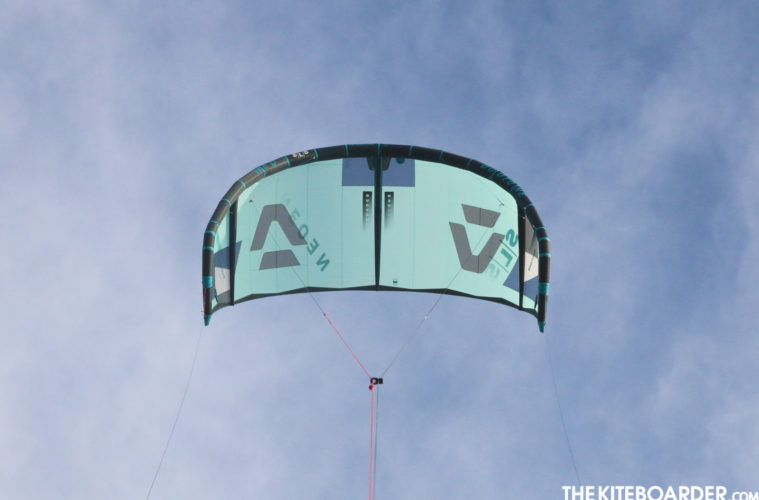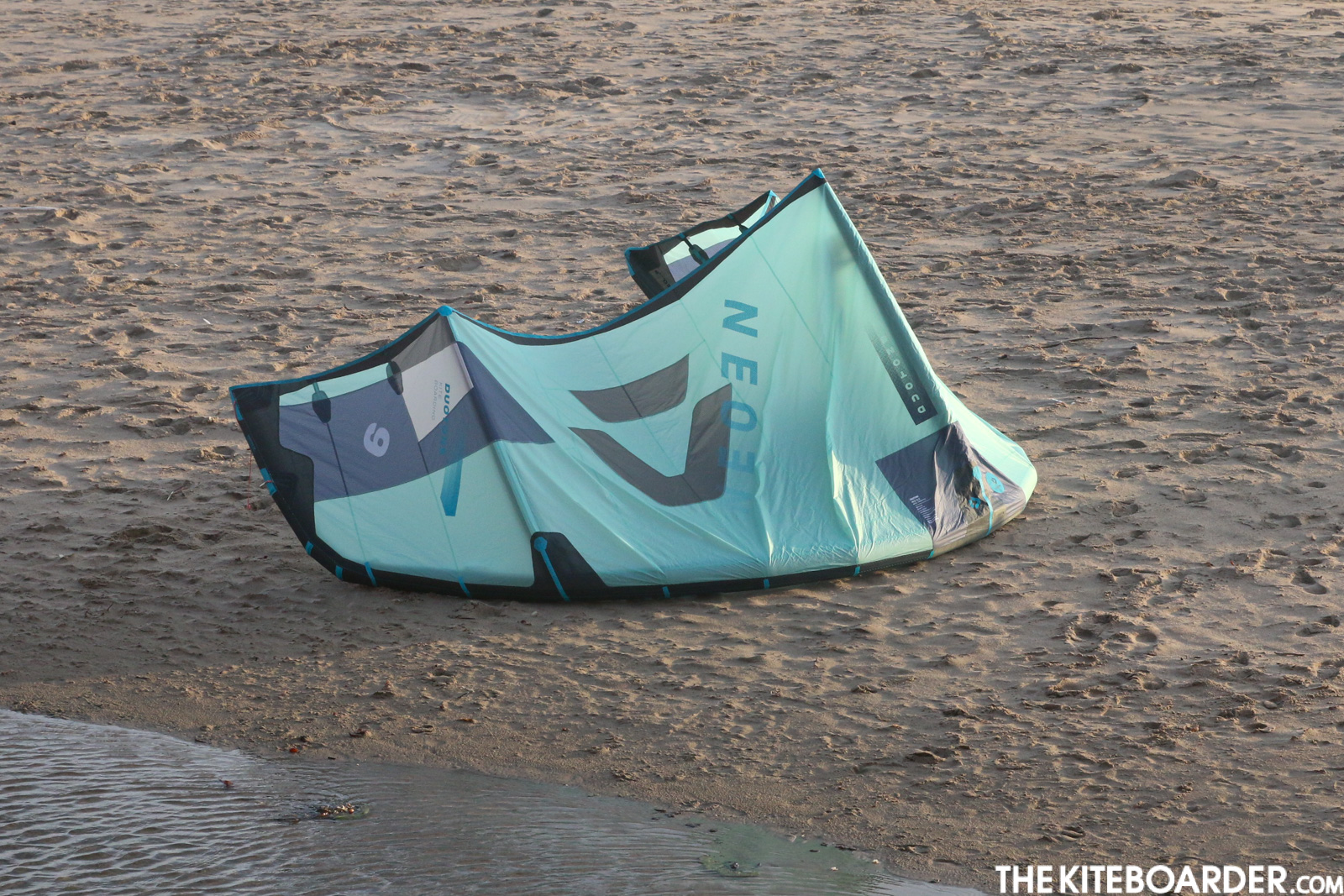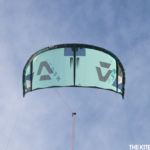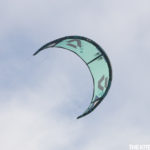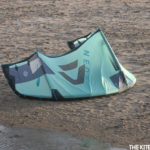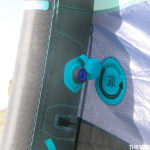Sizes Available: 5, 6, 7, 8, 9, 10, 11, 12m
Sizes Tested: 8, 10m
Duotone Says:
The all-new Neo SLS joins the revolution in the Duotone range and will excite every experienced, ambitious and enthusiastic kiter. SLS stands for Strong Light Superior, for the 2021 Neo that means Penta TX, a brand new material to replace the Dacron in the kite, it’s considerably lighter and offers up to five times as much tear resistance. This reduces the overall weight and gives you a faster kite that will fly in less wind.
In the waves, this reduced weight and therefore the improved drifting means a massive spike in performance. The kite will drift down the line in a manner you couldn’t have previously imagined, and light wind wave sessions will suddenly come alive. The Neo SLS will ignite your soul on the water; incredible handling, unrivalled drift and a more extensive wind range. Accept no substitutes, choose the Neo SLS and bring your kiteboarding experience to the next level.
Visit for more info: www.duotonesports.com/kiteboarding/kites/neo-sls/
TKB Says:
Dacron has held center stage in the kiteboarding industry for roughly 20 years and despite its tried and true qualities, the search for a lighter yet sufficiently durable alternate has failed to materialize, until now with the introduction of Duotone’s Penta TX Dacron substitute. This year the Neo comes in regular Dacron construction as well as the new SLS trim level which features the special Penta TX material that lowers the overall weight of the kite for increased performance for wave riding. Our first impression with the new material is that it feels extra crisp and thinner in nature, very light to the feel and off the record, it subjectively resembles hot-chick clubbing pants with a little bit of sparkle finish for some excitement.
In addition to the material upgrades, the 2021 Neo has gotten some airframe adjustments along with new strut material that required some significant tweaking to keep the kite’s new stiffness and weight properties working together. The wingtips are more squared off than in years past, but when you zoom out past a million of the small details, the cumulative effect is a lighter airframe that yields better handling for wave riding while sticking to the Neo’s unique surf formula that has made it such a popular kite.
The Neo continues to use the large diameter inflation valve dubbed the ”˜Max Flow’ system which connects directly with Duotone’s pump hose without the use of a nozzle; the inflation system’s twist valve rotates with the insertion of the hose to keep air locked in the kite. Deflation can happen through both the inflation valve and a dump valve on one side of the kite, making both inflation and deflation quick and easy. The front bridle uses a single setting bridle that features a new line material that looks noticeably thinner than bridle materials in year’s past. The wingtips continue to use the adaptive tip tuning setup that offers two settings: ”˜Soft’ is the farther aft position and ”˜Hard’ is the farther forward. The Neo continues with bar pressure that ranges from medium on the ”˜Hard’ setting to light to medium on the ”˜Soft’ setting. The steering input gets an upgrade with extra crisp response from the bar that makes the Neo feel both quicker to initiate turns and faster through the turning. Part of these improvements may be attributed to the weight savings from the SLS materials, but may also be due to the new low-stretch flying lines that come with the Click Bar. The Neo continues to steer on a tight pivotal arc and is still very much a grunty low-end puller that is most user-friendly at the lower end of its wind range. If you size down a kite, we found we had the perfect pull for wave riding, with its low-end power and maneuverability minus 1m is where you get perfection. The power delivery is predictable across the throw and there’s plenty of depower when you need it. One of the great qualities of the Neo’s steering dynamics is its unloaded turning response; when the kite is depowered the Neo’s airframe still responds to turn inputs so you can move the kite through the window without triggering the kite’s power. The Penta TX material, although lightweight, handled overpowered conditions without any apparent problems, keeping the kite stable during high loads. Any time you make a kite lighter you will find incremental benefits in wave riding, both to maneuverability and to drift. Lighter airframes drift back into the window quicker and this is where longtime Neo fans will really find a big difference. When you combine the Neo’s drift with its precise steering input it gets you one step closer to focusing purely on the wave and this is a key reason to give Duotone’s new SLS material a try.
The Click Bar got an upgraded line set this year along with a more subdued colorway but keeps much of the successful formula from last year. The new kite lines boast a smaller diameter, stronger breaking force and less stretch to increase the crisp communication of control inputs directly into the airframe. The Click Bar is available in two sizes, either the smaller fixed-length 42cm wide bar with 22m (20m+2m extension) lines or the original 49cm length with 24m (22m+2m extension) lines. The Click Bar features a single centerline safety depower system and an adjustable attachment point that allows you to swap the height of the center lines’ V (it’s worth noting that you don’t have to re-thread the entire length of a line through a ring to accomplish the change). The outside lines end in knots and the center lines end in loops. The Click Bar features a molded plastic throw line that untwists itself after you spin, a sliding stopper to adjust the length of throw and Duotone’s proven push away quick release. The quick release, when opened horizontally, locks into an open position, holding the gate open. Reassembly is easy: one hand inserts the loop back into position and pushes on the catch button while the other hand raises the quick release handle so the catch can move back into its closed position and then the handle is moved back into the locked position.
The Click Bar can be purchased with one of the four chicken/connection loop options that are tailored to your specific style of riding. Most freeride-oriented kiters might choose the Freeride connection loop which is the smallest option, keeping the bar close to your body. The historically normal-sized loop is now called the ”˜Freestyle Kit,’ which is sized in the middle for both hooked and unhooked riding. For riders that unhook all day long, there is a large ”˜Wakestyle’ loop and for those that only ride with a surf slider rope, there is the ”˜Rope Harness Kit,’ which is a small loop with an integrated metal slider to reduce friction and keep the bar close to the rider. Swapping the loops out is easy; you just need a fin key to remove a ¾ inch set screw to change out the desired loop. The Click Bar settles the debate between above or below the bar tuning by placing it exactly at your fingertips. The twisting motion for powering up takes a little bit of focus while riding at first and the button for depower is easily accessed at all times. While it’s a big shift from the systems we have come to know, seamless controls like this are the future of the sport. The ratchet knob built into the bar end is easy to grab a hold of and easy to rotate once you have some familiarity with it and works while kiting with easy tuning on the fly. The Click Bar also integrates two visual indicators that reveal the power position the bar is set to; one is located on the bar itself, moving left to right, and the second is a small red indicator on the leader line for the right outside line. You don’t realize how you visually assess the trim strap’s position until it is gone, so these visual indicators are actually a very nice feature. Compared to other systems, the mechanics of Duotone’s Click Bar is entirely closed, which means you won’t be washing it out. The Click Bar features retractable bar bungees, soft bar ends with integrated floats, a fairly dense EVA grip that feels asymmetrical in your palm with subtle raised bumps between your fingers, and a very comfortable stamp pattern running the entire length of the bar. This year the colorway gets more subdued with overall gray and white tones mixed with red highlights to ensure visual awareness for polarity.
Visit for more info on the bar: www.duotonesports.com/kiteboarding/bars/click-bar/


